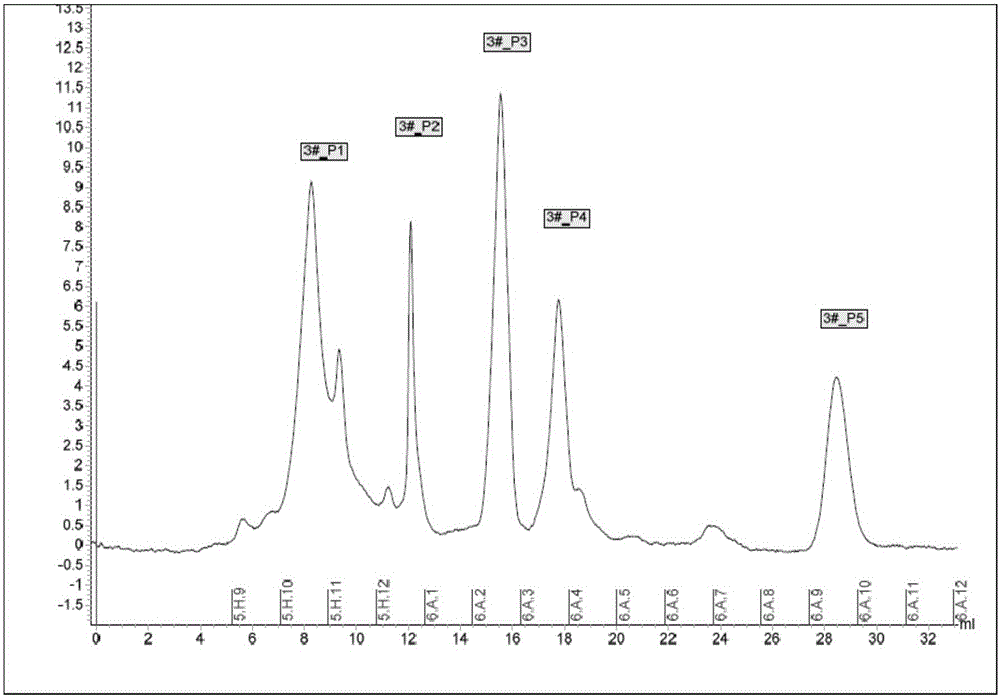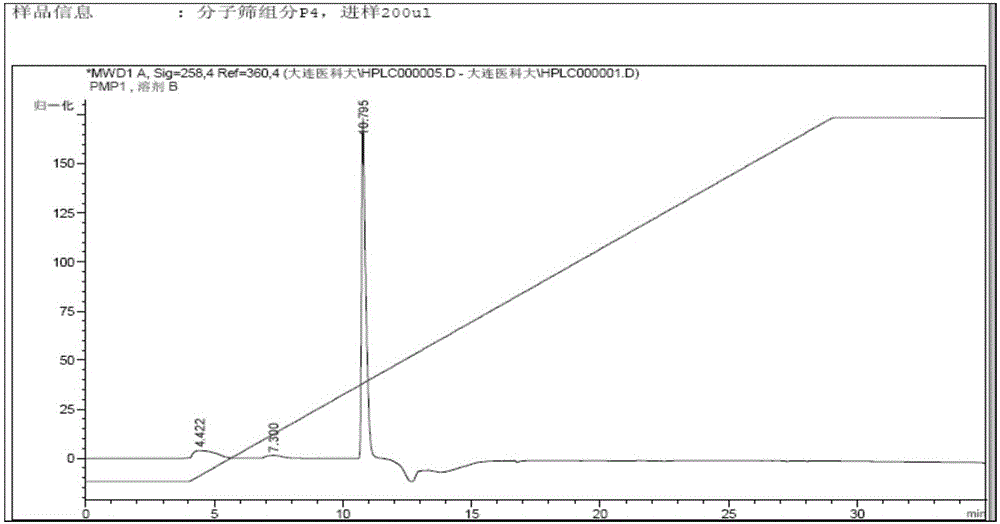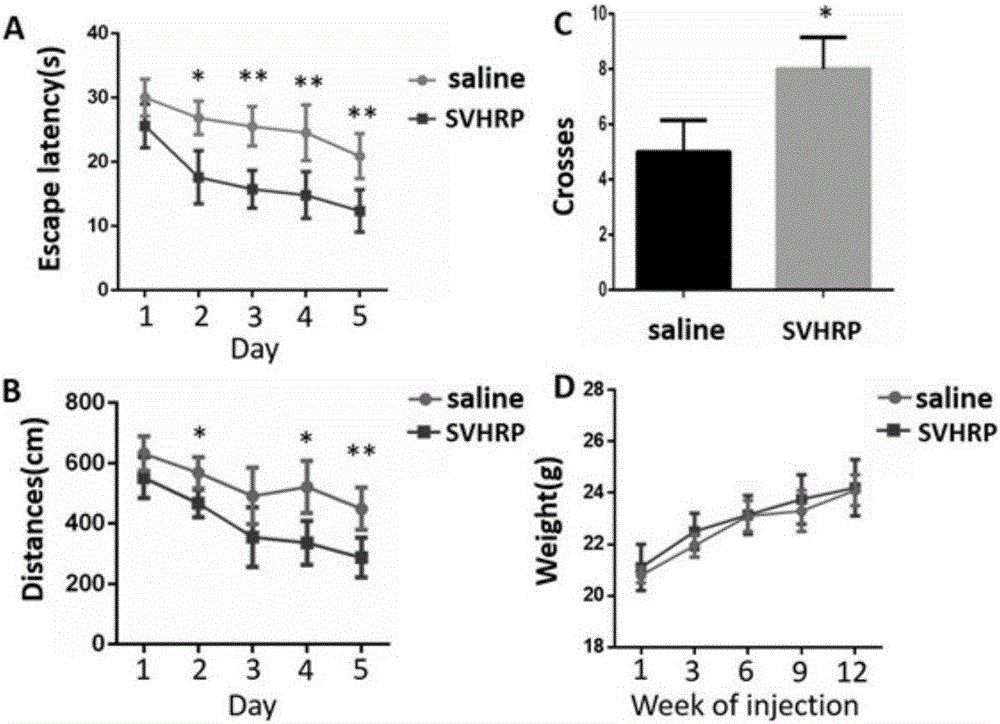Scorpion venom heat-resistant synthetic peptide and application thereof
A technology for synthesizing peptides and scorpion venom, which is applied to medical preparations with no active ingredients, medical preparations containing active ingredients, peptides, etc., and can solve the problem of low peptide extraction rate from scorpion venom heat-resistant peptide extracts
- Summary
- Abstract
- Description
- Claims
- Application Information
AI Technical Summary
Problems solved by technology
Method used
Image
Examples
Embodiment 1
[0035] Amino Acid Sequence Determination of Heat-resistant Peptide from Scorpion Venom
[0036] (1) Redissolve and centrifuge the freeze-dried powder of BmK scorpion venom from Yichang, Henan Province with three-distilled water, and take the supernatant, which is the BmK scorpion venom extract; pack it in a heat-resistant plastic tube with a cover, and place it in a constant temperature water bath In the process, heat at 100°C for 4 hours, take it out, cool down to room temperature naturally, and then centrifuge at a high speed to get the supernatant, which is the extract of heat-resistant components of scorpion venom; The filter tube is used to perform centrifugal ultrafiltration on the heat-resistant component extract of scorpion venom, and take the upper bath solution to obtain the heat-resistant polypeptide extract of scorpion venom. Take the supernatant by centrifugation, which is the extract of heat-resistant components of scorpion venom. Use centrifugal ultrafiltration ...
Embodiment 2
[0046] Purification of Synthetic Scorpion Venom Heat-resistant Polypeptide by High Performance Liquid Chromatography (HPLC)
[0047] In the process of peptide synthesis, some heteropeptides with structures similar to the target peptide will be produced, such as diastereoisomers due to amino acid racemization, missing peptides due to unlinked partial amino acids, and fragmentation due to peptide bond cleavage peptide etc. Therefore purify with RP-HPLC:
[0048] Sample purification conditions:
[0049] Structure: KE-15
[0050] Serial number: 0200046
[0051] Batch number: P160418-CQ455216
[0052] Column: 4.6mm*250mm, Inertsil ODS-SP
[0053] Solution A: Acetonitrile with 0.1% trifluoroacetic acid
[0054] Solution B: water containing 0.1% trifluoroacetic acid
[0055]
[0056] Flow rate: 1.0ml / min
[0057] Wavelength: 214nm
[0058] Injection volume: 10μl
Embodiment 3
[0060] Using Morris water maze test to detect the effect of SVHRP on learning and memory in AD mice
[0061] The water maze was used to detect behavioral changes. The positioning navigation experiment lasted 5 days, trained 4 times a day, and recorded the time when the mice found the platform (the platform was placed in the first quadrant), that is, the escape latency period, and allowed the mice to stay on the platform for 20 seconds; The mouse did not find the platform within 60s, and the escape latency was recorded as 60s. In the space search experiment, after the 4th training on the 5th day of the positioning navigation test, the platform was removed, and then the mice were put into the pool at the water entry point in the third quadrant to start the test. Calculate the swimming distance and swimming time percentage of mice in the target quadrant (quadrant 1), and the total time is 60s. The number of times the mice crossed the hidden platform was detected.
[0062] The M...
PUM
| Property | Measurement | Unit |
|---|---|---|
| Wavelength | aaaaa | aaaaa |
Abstract
Description
Claims
Application Information
 Login to View More
Login to View More - R&D
- Intellectual Property
- Life Sciences
- Materials
- Tech Scout
- Unparalleled Data Quality
- Higher Quality Content
- 60% Fewer Hallucinations
Browse by: Latest US Patents, China's latest patents, Technical Efficacy Thesaurus, Application Domain, Technology Topic, Popular Technical Reports.
© 2025 PatSnap. All rights reserved.Legal|Privacy policy|Modern Slavery Act Transparency Statement|Sitemap|About US| Contact US: help@patsnap.com



